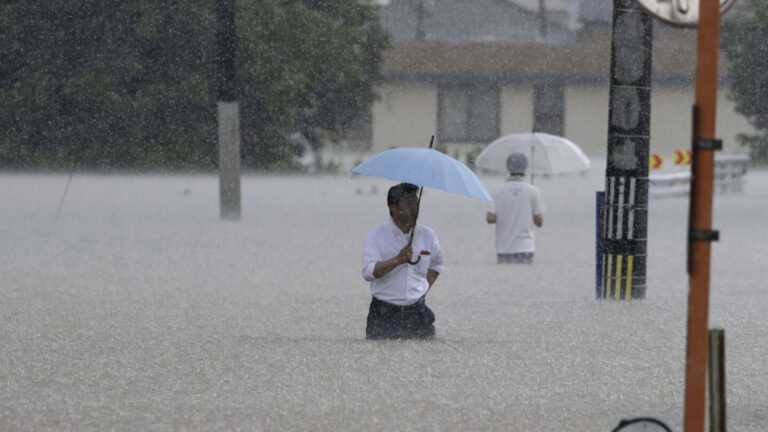Schools in New Delhi were forced to close on Monday after heavy monsoon rains hit the Indian capital, with landslides and flash floods killing at least 15 people in the past three days. Further north, the overflowing Beas River swept vehicles downstream as it inundated neighborhoods.
In Japan, torrential rain pounded the southwest, causing floods and landslides that left two dead and at least six others missing on Monday. Local television showed damaged houses in Fukuoka Prefecture and muddy waters from the swollen Yamakuni River that appeared to threaten a bridge in the city of Yamabakei.
In Ulster County, in New York's Hudson Valley and Vermontsome said the flooding is the worst they've seen since the devastation of Hurricane Irene in 2011.
Scientists say catastrophic floods around the world have a common cause: a warmer atmosphere. (July 11)
Despite the devastating floods in India, Japan, China, Turkey and the United States may seem like distant events, atmospheric scientists say they have this in common: storms form in a warmer atmosphere, making extreme rainfall a more frequent reality now. The additional warming that scientists predict will only come does the worst.
This is because a warmer atmosphere holds more moisture, causing storms to drop more rainfall that can have deadly effects. Pollutants, especially carbon dioxide and methane, warm the atmosphere. Instead of letting the heat radiate away from Earth into space, they hold onto it.
While climate change is not the cause of the storms that trigger the rainfall, these storms form in an atmosphere that is becoming warmer and wetter.
A motorcyclist rides through a waterlogged road during a heavy downpour in New Delhi, India, July 9, 2023. (AP Photo/Manish Swarup)
“Sixty-eight degrees Fahrenheit can hold twice as much water as 50 degrees Fahrenheit,” said Rodney Winn, a meteorologist at the National Weather Service in Tampa Bay. “Warm air expands and cold air contracts. You can think of it like a balloon – when it heats up it will expand in volume, so it can hold more moisture.”
For every 1 degree Celsius, which equals 1.8 degrees Fahrenheit, the atmosphere warms, it holds about 7% more moisture. According to NASA, the average global temperature has risen by at least 1.1 degrees Celsius (1.9 degrees Fahrenheit) since 1880.
“When a storm develops, the water vapor condenses into raindrops and falls back to the surface. So as these storms form in warmer environments that have more moisture, precipitation increases,” explained Brian Soden, professor of atmospheric sciences at the University of Miami.
Along Turkey's mountainous and scenic Black Sea coast, heavy rains have swollen rivers and destroyed cities with floods and landslides. At least 15 people died in floods in another mountainous region in southwestern China.
“As the climate warms, we expect heavy rainfall events to become more common, which is a very strong prediction of climate models,” added Soden. “It's not surprising to see these events happening, it's what the models have been predicting since day one.”
Gavin Schmidt, a climatologist and director of NASA's Goddard Institute for Space Studies, said the regions most affected by climate change are not the ones emitting the most global-warming pollutants.
“The largest volume of emissions comes from industrialized Western nations, and most of the impacts occur in places that don't have good infrastructure, that are less prepared for extreme weather and don't have real ways to manage it,” Schmidt said. .
_____
The Associated Press's climate and environmental coverage receives support from several private foundations. See more about AP's climate initiative here. AP is solely responsible for all content.



